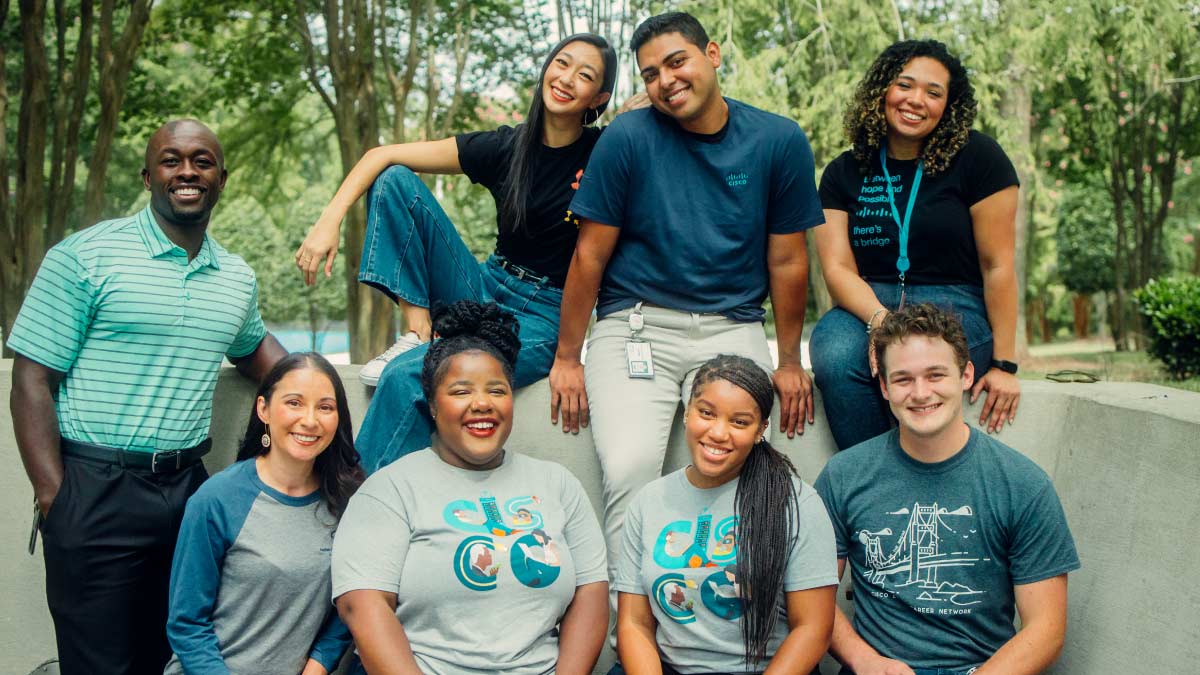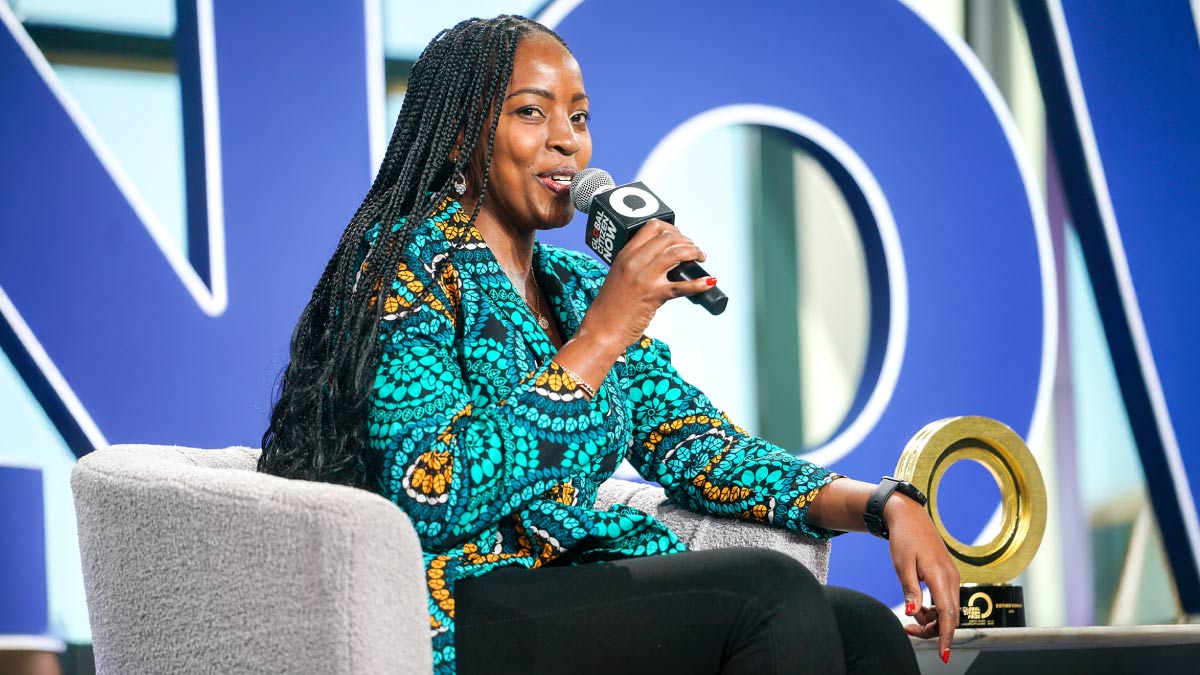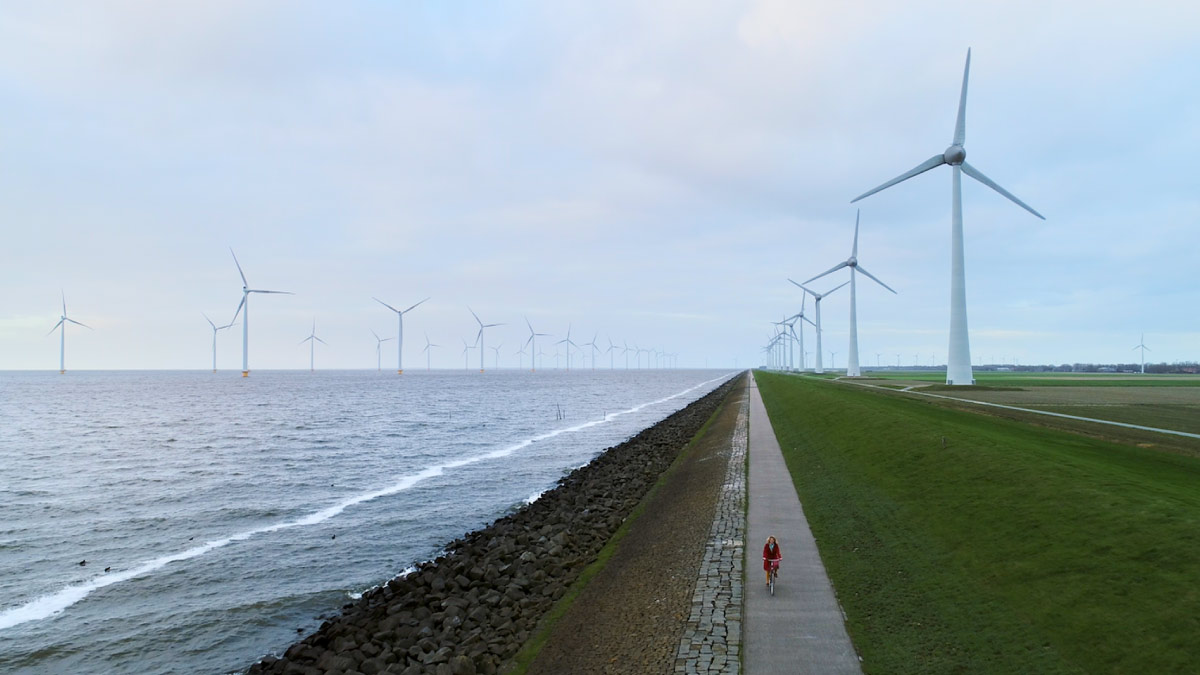As Cisco EVP and chief people, policy, and purpose officer, Francine Katsoudas helps guide some of the company’s most important initiatives — for its employees, its partners and customers, and communities around the world.
And at a company as committed to positive global change as Cisco, that’s a big responsibility — especially as it celebrates the global impact of its first 40 years and its powerful commitment to the future.
Following her participation at the World Economic Forum in Davos, Switzerland, last week, we spoke with Fran about Cisco’s latest Purpose Report; the company’s new 40 Communities ambition, designed to impact underserved people in a wide range of global regions; and its commitment to building tech and societal resilience around the world.
Thank you, Fran! Let’s start with the big picture. What are some key macro-economic and mega forces that are defining our world and our industry today?
The first mega force that all of us are talking about, of course, is AI. What we're seeing across industries and communities is a belief that this technology can do so much. At WEF there was a theme around growth in AI, and this puts technology front and center as we think about resilience and our interconnected future. The use cases for AI are clearer and more outcome-focused this year -- evolving from just productivity to how it can help people, organizations and countries create better and more fulfilling lives -- and how we can use AI to help close the digital divide.
The other thing that always has to go hand in hand with AI, is cybersecurity. In today’s world, we need security for AI and AI for security. This idea has redefined how we talk about AI at Cisco. But I think many other companies are also thinking about not only the technology but about practices for their people to keep everyone safe.
Cisco’s Purpose Report is a sweeping, comprehensive document that chronicles progress, innovation, and what more needs to be done to realize Cisco’s commitment to an Inclusive Future. Could you share some highlights from this year’s report.
The first thing that I would say is that we are celebrating 40 years as a company. And there’s a realization that from day one, Cisco has been all about connections. What you see in the Purpose Report is how in this age of AI and global disruption, we as a company are more compelled than ever to make sure we are leveraging our technology and our people to connect and do good. And that’s not just for our business but doing good for the world, because the need for public and private to come together and address pressing global issues has never been more urgent.
There are amazing statistics in the Purpose Report that make me so proud of Cisco and our people. First, our Networking Academy has trained more than 24 million students with technology skills and opportunities since its inception in 1997. Another thing that is so amazing is that this year 86 percent of Cisco employees participated in giving back to their communities — the fifth year in a row that we have been over 80%. I've never seen this at another company. It shows how engaged our employees are. And that’s just two examples of what you’ll see in the Purpose Report. There’s so much to be proud of — about our past and all that we will continue to accomplish in the future.
One of the focus areas of the Purpose Report is resilience. How does Cisco define resilience in our tech-driven world?
When we think about resilience today, it’s often from an individual perspective, maybe even a company perspective. What you'll see in the Purpose Report and in the work that we're doing is thinking about resilience from a community perspective as well. It comes down to the ability to turn disruption and challenges into opportunities for growth and innovation. Today, that’s tightly interwoven with technology because so much depends on having access to secure, dependable connectivity. We aim to build a legacy that extends far beyond Cisco’s 40th anniversary and contribute to the world a model for driving resilience and true systems change based on lasting and enduring relationships — engaging, supporting and investing to power an inclusive future for all.
What about the disparity in resilience? How does that play out from country to country?
Everyone is at a different point on the journey to resilience, whether that’s country by country or community by community. This shows up especially when we consider that 2.6 billion people globally are still not connected to the internet. Even things like the cost to access the internet varies from country by country. In less economically developed countries, it's much more expensive to get connected. That creates an issue from a resilience perspective, but also such an opportunity. Our Rural Broadband Innovation Center in North Carolina is just one example of how we are going after that problem.
You mentioned security. That’s a critical element to resilience.
This year, cybercrime is expected to cost more than $10 trillion globally. So, security is arguably the most important element of connection and resilience, whether it’s individuals, critical infrastructure, or entire countries that are threatened.
From a Cisco perspective, we initially started with connection 40 years ago, and that remains a cornerstone today. But we have to bring security into the dialogue as another vital pillar so that when people do finally get connected they don’t find themselves victims of cybercrime. The most important thing now is to securely connect people — to ensure that security is always front and center. As an example, we've done a lot of work looking at security and resilience on the African continent and we see that cybercrime is impacting as much as 10 percent of GDP. That’s exactly what we have to prevent. Also, our world is so interconnected that no one is completely secure until we all are. So, whether the developing world or developed, we need to do all we can to build resilient security, from the smallest business to the biggest enterprise or government.
Looking forward, tell us about one of Cisco’s next big ambitions — impacting 40 Communities around the world.
Something that we're so proud of as a company is that we met our goal of positively impacting a billion people well ahead of schedule. We actually did that in 2023, and we did it through all of the amazing projects and efforts and partnerships across both the public and private sectors – non-profits, governments and companies all working together. We saw that when we apply Cisco’s unique strengths – our technology, our people, and the trust people have in our brand — that we can create impact at huge scale. All of this led to a big question around what's next? We decided that over the next decade, we intend to engage, support, and invest in 40 communities around the globe.
Something that we realized at Cisco from day one is that our technology connects best where we leverage it to build resilience in communities. This is why we’ll bring our Resilient Ecosystem Framework into communities — so we can better understand how we can truly serve that community. We’ll be looking at people in society, we'll be looking at government, we'll look at economies and what can be done to create projects that are truly meaningful.
I’m sure Cisco’s Country Digital Acceleration (CDA) will have a great impact on the 40 Communities.
Yes, CDA brings together nations’ industry, government, and academic leaders to co-innovate and solve some of their biggest societal problems. And when I think about what we've done through CDA against the backdrop of our Purpose, you can expect that we'll continue to explore things like EDGE Incubation Centers that connect digital skills to jobs in places like Africa. Those EDGE Centers provide a physical space equipped with our technology, accelerating innovation and collaboration for start-ups.
CDA is also celebrating its 10 anniversary this year.
Yes, we are very excited for the global CDA team! They have done so much good work, spanning more than 50 countries around the world. CDA leverages our technologies and expertise while forming great partnerships. We’ve helped many non-profits and governments scale their efforts, and over the past 10 years our strong partnerships have helped our work to narrow the digital divide by ensuring inclusive and equitable access to knowledge, resources, and opportunities. CDA has taken on innovation challenges around security, sustainability, and we are looking forward to much more.
For CDA and Cisco, it sounds like the momentum is accelerating.
You can expect that we'll look at how we can leverage both our mainstream and cutting-edge technologies to drive access to governments in a really positive way and ensure that services like transportation, health care, and education can get easier for citizens to use. We’ll ensure that all of the work we do to connect, we do in a secure way. We talked about our 40 Communities ambition, and right now we’re identifying the first set of communities that we're going to start with. We anticipate that we'll be bringing CDA and so many of our employees along with us on this journey.
Beyond being a company-wide effort, the ecosystem perspective is critical. To what extent will Cisco’s efforts continue to reach far beyond the company walls?
Our employees will play a big role in our next big ambition to truly impact 40 communities around the world. But one thing that WEF highlighted was the need for collaboration on a global scale to solve our world’s biggest problems — and public-private partnerships are critical to addressing this. Beyond that, it’s just so important to have that holistic view — to remember that our interconnectedness underscores the need to support vulnerable communities. And why helping them become resilient should matter to us all.





